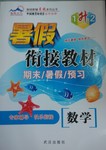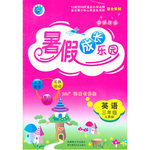题目内容
Temperature is part of my married romance. 36 to New York from Baltimore——where there is just one small snowstorm each year——I was seated by a fireplace in my new home, with fires 37 all day, just as what ancient people did at a wedding.
My husband, Peter, comes from northern Ontario(加拿大的安大略省), where winter 38 from September to May and cold wind is 39 . “When Canadians have -30℃, they 40 it bravely,” he says, “Cold wind is for crybabies.(爱哭的人)”
So to marry this man I had to learn to 41 for serious cold. To get me from Baltimore’s Inner Harbor to Albany’s frozen Hudson, Peter piled me 42 jackets and sweaters, scarves and gloves, even a hat with earflaps. The gift of Sorel boots——comfortably warm at Canada’s 30 below, was a 43 meaning getting serious.
That first winter together, living in upstate New York, I thought I’d 44 . My boots were good below freezing, but my fingers could 45 tie them. Physical adaptation is real, but it came slowly. And there is also emotional 46 to cold. Some days I tell myself that I have enough beach memories to stick to on 47 days and other days I am reminded that living cold does indeed build 48 .
49 , having a warm house is important. After my first marriage ended, for years I 50 went on a second date with a man whose response to my “I’m cold.” was, “Put on a sweater.” Now I’m married to a man who 51 that cold hands do not mean a warm heart, and that a big oil bill is better than roses. But surprisingly, I’ve grown, too. I am 52 , in this new life and climate, to go and look for that cost-saving sweater.
The word comfortable did not 53 refer to being satisfied. It’s from Latin, comfortare, meaning to strengthen. The Holy Spirit is Comforter;not to make us comfortable, but to make us 54 . We 55 not be warm but we are indeed comforted.
1.A. Coming B. Having been coming
C. To come D. Came
2.A. lightning B. burning C. going D. flashing
3.A. appears B. starts C. keeps D. runs
4.A. something B. everything C. nothing D. none
5.A. suggest B. face C. neglect D. love
6.A. drink B. receive C. dress D. ride
7.A. under B. over C. inside D. with
8.A. remark B. sign C. comment D. show
9. A. sleep B. forget
C. die D. continue
10. A. hardly B. easily C. tightly D. loosely
11.A. health B. reaction
C. feelings D. adaptation
12.A. rainy B. freezing C. sunny D. happy
13.A. character B. love
C. hope D. hardship
14.A. Meanwhile B. However
C. Therefore D. Besides
15.A. merely B. ever C. never D. just
16.A. wonders B. knows C. states D. decides
17.A. unable B. accustomed
C. interested D. willing
18.A. originally B. exactly C. actually D. namely
19.A. wild B. cold C. strong D. warm
20.A. will B. must C. can D. may
1.A
2.B
3.D
4.C
5.B
6.C
7.D
8.B
9.C
10.A
11.D
12.B
13.A
14.B
15.C
16.B
17.D
18.A
19.C
20.D
【解析】略

 暑假衔接教材期末暑假预习武汉出版社系列答案
暑假衔接教材期末暑假预习武汉出版社系列答案 假期作业暑假成长乐园新疆青少年出版社系列答案
假期作业暑假成长乐园新疆青少年出版社系列答案When we look at the sky and see a bright light moving quickly across it or coming towards the earth, we talk about seeing a “shooting star” or a “falling star”. These moving lights are not, in fact, stars at all. They are small pieces of matter from outer space, which burn up as they enter the Earth’s atmosphere. The correct name of them is meteoroids. Any pieces that make it to the Earth’s surface without completely burning up are known as meteorites. A meteor is actually the name given to the light we see when a meteoroid is burning up.
When a meteorite hits the Earth at speeds between 11 and 72 kilometers a second, it can do amazing damage. A very large meteorite could knock the earth out of its orbit. If this happened, all life on Earth would probably become extinct(灭绝). The path we follow around the Sun would change and as a result the Earth would become either much hotter or much colder. This change in temperature would affect sea levels and the amount of water in rivers. There would either be huge floods, which would cover most of the land with water, or the oceans would dry up and there would be a drought, which means a long period of time without rain. Either way, nothing could survive. If a large meteorite landed in the sea it would almost certainly cause tsunamis, which would race towards the land, destroying everything in their paths.
Although it is unlikely the Earth will be struck by a meteorite large enough to do that kind of damage, there is evidence of fairly large meteorites hitting the Earth in the past. In 1908 a large area of forest in Tunguska, Siberia was destroyed by a meteorite that came apart just before it hit the ground. The moon, however, has about three billion craters陨石坑caused by meteorites impacting影响 its surface. The reason more meteorites have reached the surface of the moon than the surface of the Earth is that the moon does not have enough atmosphere for the meteorites to burn up in. some of the meteorites that have reached the Earth’s surface have done considerable damage. Some scientists believe it was a change of climate caused by meteorites hitting the Earth that resulted in the extinction of the dinosaurs and other large prehistoric animals.
Scientists are especially interested in meteorites because they contain information about the solar system. It is widely believed by scientists that most meteorites are produced by collisions(碰撞) between asteroids (small planets). These collisions probably happened many billions of years ago. This means the physical and chemical structure of a meteorite can give scientists information about the early days of the universe.
1.The story is about ___.
|
A.floods caused by meteors |
|
B.matter from outer space |
|
C.life on Earth millions of years ago |
|
D.meteorites that have damaged the moon |
2.The Earth has ___.
|
A.three billion craters |
|
B.fewer craters than the moon |
|
C.more craters than the moon |
|
D.a thinner atmosphere than the moon |
3.Some scientists believe the dinosaurs became extinct because ___.
|
A.they were hit by meteors |
|
B.meteorites landed on their nests |
|
C.meteorites landed and changed the climate |
|
D.they could no longer breathe the atmosphere |
4.Meteors are ___.
|
A.small planets |
|
B.the same as asteroids |
|
C.from broken parts of asteroids |
|
D.the light we see when meteoroids hit our atmosphere |
17.---The weather repot says the temperature is going to drop sharply. Do remember to put on more clothes.
--- __________
|
A.Made it |
B.Got it |
C.Understood it |
D.Heard it |